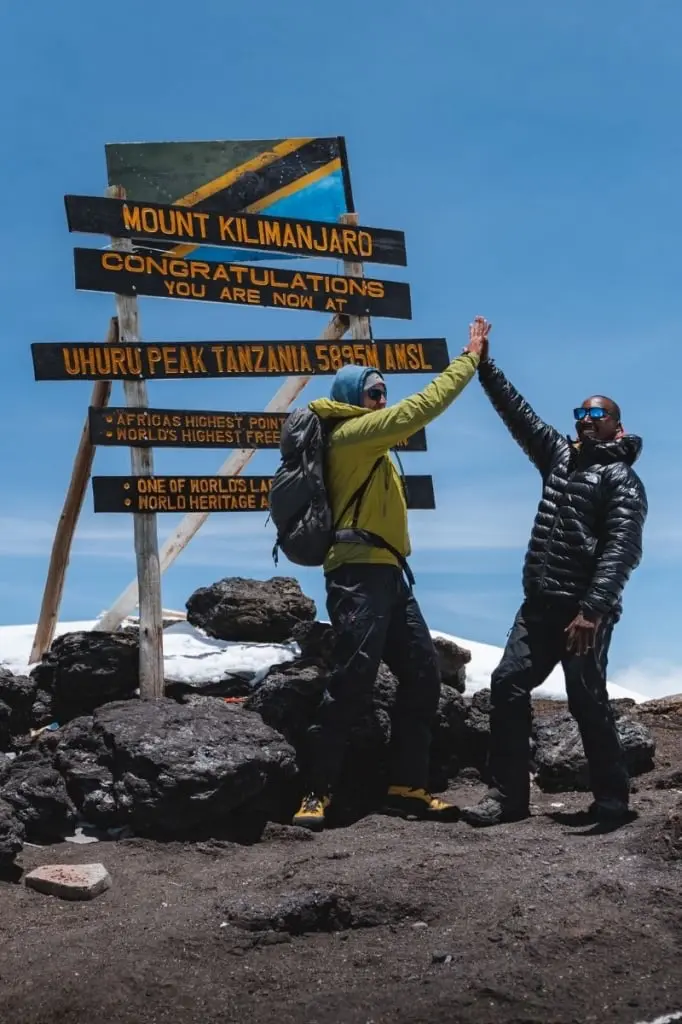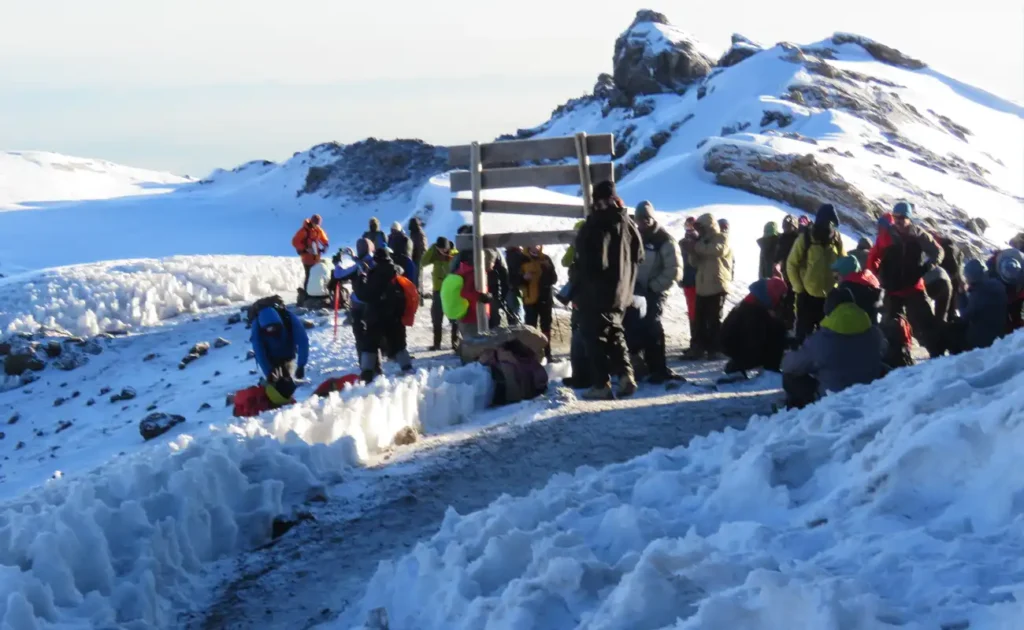Reaching the summit of Mount Kilimanjaro is not just a physical challenge; it’s a test of your adaptation skills. More than 30,000 people attempt this climb each year, but nearly half do not reach the peak due to altitude sickness. The ascent requires more than just determination; it requires understanding how to let your body adjust to the changing environment.
Historically, climbers have seen the journey to Kilimanjaro’s peak as a rite of passage. One key to success lies in “Pole, Pole,” a Swahili term meaning “slowly, slowly,” which emphasizes the significance of pacing oneself. Studies have shown that taking at least eight days on the ascent dramatically increases the success rate, as it allows for proper acclimatization, reducing the chances of altitude sickness and enhancing the overall experience.

Altitude Acclimatization: Tips for Climbing Kilimanjaro
Scaling Mount Kilimanjaro is a dream for many adventurers, but acclimatizing to the altitude is crucial for success. As you ascend, the oxygen levels decrease, making it tougher to breathe. This is why it’s important to take it slow. “Pole, Pole” or “slowly, slowly” is the mantra climbers should adopt. This approach allows your body to adjust and reduces the risk of altitude sickness.
One effective method is to follow the principle of “climb high, sleep low.” This means ascending to a higher altitude during the day, and then descending to a lower altitude for sleeping. It aids in acclimatization because it gives your body a chance to adapt gradually. Having rest days is also essential. Climbing all the way without breaks can lead to serious health issues.
Hydration plays a significant role during acclimatization. Always carry enough water and drink regularly, even if you’re not thirsty. It helps your body adjust more easily to the altitude change. A healthy diet rich in carbohydrates can also give you the energy needed for the climb. Energy-rich snacks like nuts and dried fruit are practical for mountain treks.
Recognizing the symptoms of altitude sickness is vital for safety. Signs include headache, dizziness, and difficulty breathing. If you experience any of these, it’s important to descend immediately. Here’s a table of symptoms for easy reference:
| Symptom | Action |
|---|---|
| Headache | Rest and hydrate |
| Dizziness | Descend to lower altitude |
| Breathing difficulty | Use supplemental Oxygen |
Unlocking Acclimatization: The Power of Diamox on Kilimanjaro
The Importance of Altitude Acclimatization for Mountaineering
Adaptation to high altitude is crucial for anyone aiming to reach mountain peaks. As you climb higher, the air becomes thinner, making it harder to breathe. Without proper acclimatization, climbing these heights can be dangerous. Headaches and dizziness are common symptoms of poor adjustment. These can lead to severe altitude sickness if ignored.
The process of acclimatization allows your body to get used to less oxygen. This adaptation helps you to climb safely. Giving your body time to adjust can prevent many health issues linked to high altitudes. The body can produce more red blood cells, which carry oxygen more efficiently to your muscles. This process is key in helping climbers feel and perform better at height.
Proper acclimatization includes several strategic actions.
- Climb slowly to allow the body time to adapt.
- Maintain hydration levels to support bodily functions.
- Include rest days to help the body acclimatize naturally.
Following these steps ensures a safer ascent and decreases the risk of altitude illnesses.
Mountaineering safety relies heavily on understanding and respecting altitude changes. If ignored, the risks are significant, potentially turning a thrilling adventure into a hazardous situation. Awareness of symptoms such as fatigue and rapid heartbeat can help manage potential problems. Here’s a table summarizing how the body adapts:
| Body Response | Benefit |
|---|---|
| Increased red blood cells | Improved oxygen transport |
| Expanded lung capacity | Better oxygen intake |
| Enhanced circulation | More efficient muscle support |
Key Factors Influencing Acclimatization on Kilimanjaro
The rate of ascent plays a significant role in your body’s ability to acclimatize. Climbing too quickly increases the risk of altitude sickness. The “Pole, Pole” approach, which means “slowly, slowly,” is crucial to avoid physical stress. This slow pace allows your body to adapt to lower oxygen levels found at higher altitudes. It reduces the strain on your heart and lungs.
Hydration is another vital factor in acclimatization. Drinking plenty of water helps maintain blood circulation and oxygen delivery to muscles. Dehydration can worsen altitude sickness symptoms. Keeping hydrated assists in the efficient functioning of your body during the climb. Aim to drink at least 3 to 4 liters of water daily while climbing Kilimanjaro.
Nutrition also impacts how well you acclimatize. Consuming a balanced diet rich in carbohydrates provides the energy needed for strenuous physical activity. Carbs are essential because they require less oxygen to metabolize compared to fats and proteins. Small snacks like energy bars and fruits can keep your energy levels stable. This ensures that your body has the necessary fuel for acclimatization.
Pre-existing health conditions can affect acclimatization, too. Individuals with conditions like asthma or heart problems should consult a doctor before attempting the climb. Proper fitness preparation can mitigate some risks. Regular exercise routines focused on cardio and strength training can prepare your body. Here’s a table outlining key factors and their impact:
| Factor | Impact on Acclimatization |
|---|---|
| Rate of Ascent | Reduced strain on body |
| Hydration | Improved circulation |
| Nutrition | Stable energy level |
| Health Conditions | Increased risks |
Proven Strategies for Successful Acclimatization
One effective strategy for acclimatization is the “climb high, sleep low” approach. This involves ascending to a higher altitude during the day and descending to a lower camp at night. This technique allows your body to gradually adjust to the decreased oxygen levels. It helps increase red blood cell production, making it easier to breathe as you climb. Many climbers find that this method significantly reduces the chances of altitude sickness.
Daily hydration is key when you’re at high altitudes. Drinking plenty of water helps your body transport oxygen more efficiently. It prevents dehydration, which can intensify altitude sickness symptoms. Aiming for at least 3 liters of water a day is a good practice. Remember, staying hydrated keeps your energy levels up.
Rest days are just as important as climbing days. Taking time to rest allows your body to adjust without the added stress of physical challenge. These days provide mental and physical recovery. It’s a good idea to use rest days to double-check gear and restock essential supplies. It ensures readiness for the higher climbs ahead.
A balanced diet supports your body’s needs at altitude. Eating foods rich in carbohydrates, like pasta and rice, provides energy that the body can easily use. Carbohydrates are efficient because they require less oxygen to break down, making them ideal at high altitudes. Additionally, proteins are needed for muscle repair after a long climb. Combining these food sources optimizes your body’s ability to adjust.
Another vital strategy is paying close attention to your body’s signals. Symptoms like dizziness or headaches should not be ignored. If these occur, it might be necessary to halt further ascent and get adequate rest. Monitoring your health with a local guide can pinpoint any risk of severe altitude sickness. Guides can provide vital information on safe acclimatization.
Common Mistakes to Avoid during Altitude Acclimatization
Rushing the ascent is one of the biggest mistakes climbers make. Many are eager to reach the summit quickly, but climbing too fast can cause serious health effects. This rush doesn’t allow the body enough time to adapt to the altitude. Speed can lead to altitude sickness, making it difficult to continue. Taking a patient approach ensures a safer and more successful climb.
Ignoring the body’s signals is another common mistake. Symptoms like headaches, nausea, or dizziness should not be brushed off. These are signs that your body is struggling at altitude. Taking action, like resting or drinking more fluids, can prevent further complications. Ignoring these symptoms may force a climber to turn back.
Staying dehydrated is a significant obstacle to acclimatization. Many climbers do not drink enough water, thinking they will save time and effort. However, water is essential as it aids in maintaining key bodily functions. It helps blood circulate better, delivering crucial oxygen to muscles. Ensuring a minimum intake of 3 liters daily is important.
An inadequate diet can also hinder acclimatization. Some climbers rely on quick snacks that lack necessary nutrients. A diet rich in carbohydrates and proteins provides essential energy for strenuous climbs. Such foods help keep energy levels stable and muscles ready for action. Here’s a list of foods climbers should include:
- Pasta
- Oats
- Nuts
- Fruit
Skipping rest days in the itinerary is another frequent error. Rest days allow the body to adjust slowly to the altitude changes. These days also offer a chance to recharge mentally and physically. They’re a critical part of preventing altitude sickness. Skipping them can lead to exhaustion and reduced enjoyment of the climb.
Emergency Measures for Altitude Sickness on Kilimanjaro
Recognizing the symptoms of altitude sickness early is crucial for climbers on Kilimanjaro. Common symptoms include headaches, nausea, and dizziness. If these symptoms appear, it’s important to act quickly. One basic yet effective measure is to stop ascending immediately. Resting at the same altitude can often help alleviate mild symptoms.
Descending to a lower altitude is one of the most effective emergency measures. If symptoms persist or worsen, going down is necessary. Descending even a few hundred meters can make a big difference. This provides the body with more oxygen, relieving the severe effects of altitude sickness. It’s often the most immediate and effective action to take.
Using supplemental oxygen can also be beneficial in emergencies. Many guided tours have portable oxygen systems for urgent cases. They provide instant relief by delivering concentrated oxygen to the climber. This temporary fix can stabilize someone until further descent is possible. It’s a crucial tool for managing severe cases of altitude illness.
Medications designed to treat altitude sickness can play a significant role in emergencies. Tablets like Diamox help accelerate acclimatization rates. While helpful, they should not replace other emergency measures, like descent. These medications are most effective when paired with rest and hydration. Another option is dexamethasone, which reduces brain swelling if high-altitude cerebral edema occurs.
Preparing before the climb can prevent the need for emergency actions. Packing a comprehensive first-aid kit with the necessary medication is a smart move. Discussing health concerns with a medical professional prior to the climb is also wise. A doctor can provide advice on medications, fitness, and other precautionary measures. Prevention is always better than managing an emergency.
Key Takeaways
- Climb slowly to help your body adjust to lower oxygen levels.
- Stay hydrated by drinking at least 3 liters of water daily.
- Eat a balanced diet with plenty of carbohydrates for energy.
- Take rest days to let your body acclimate and recover.
- Descend immediately if severe altitude sickness symptoms appear.




